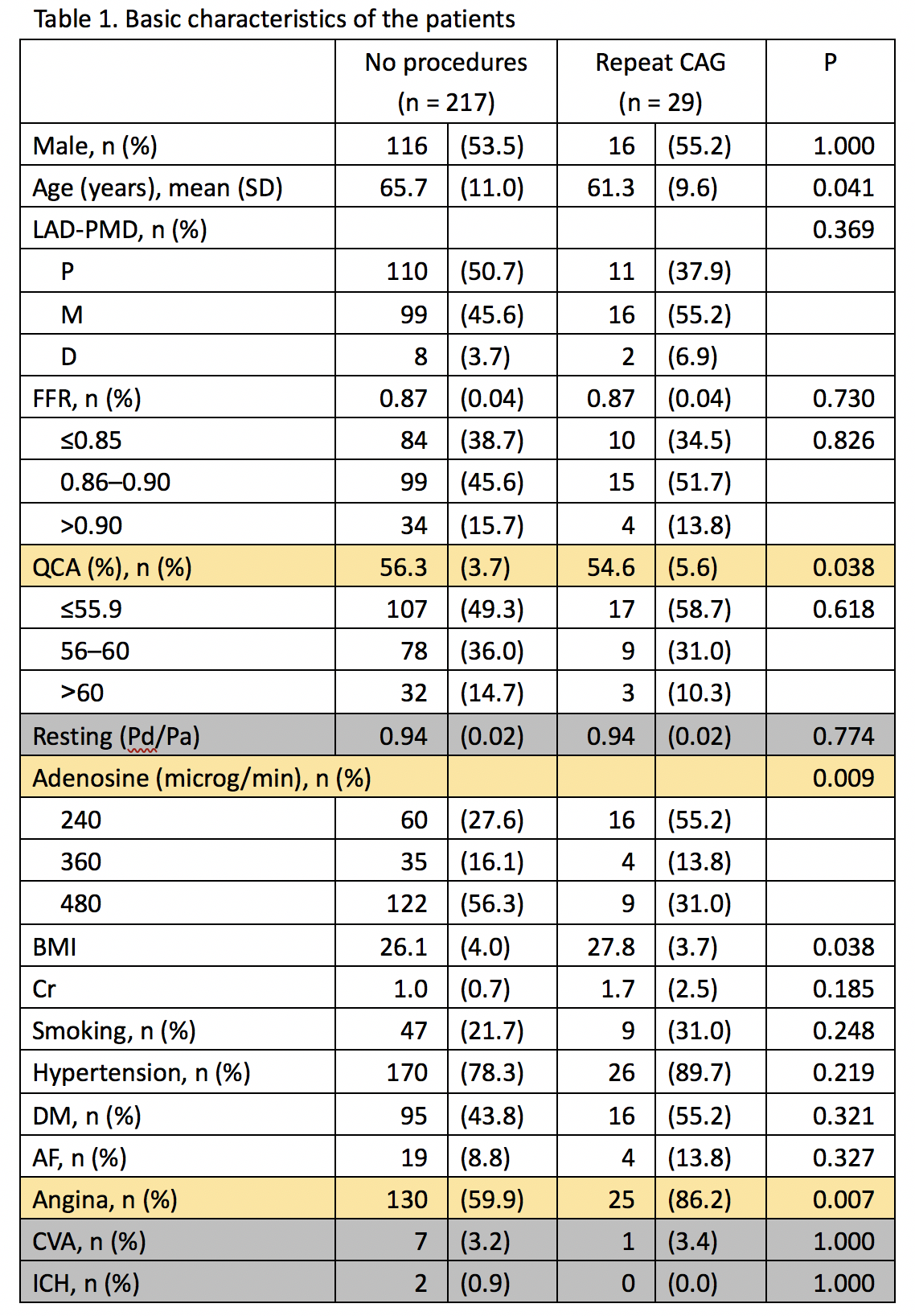Lots of interesting abstracts and cases were submitted for TCTAP & AP VALVES 2020 Virtual. Below are accepted ones after thoroughly reviewed by our official reviewers. Don¡¯t miss the opportunity to explore your knowledge and interact with authors as well as virtual participants by sharing your opinion!
* The E-Science Station is well-optimized for PC.
We highly recommend you use a desktop computer or laptop to browse E-posters.
ABS20191115_0015
| Pharmacology/Pharmacotherapy | |
| Insufficient Hyperemia by Intracoronary Adenosine Predicted Higher Adverse Cardiovascular Events | |
| Po-Lin Lin1, Chun-Che Huang2, Lawrence Yu-Min Liu3, Hsiao-Jung Huang, Hsu-Ping Wu, Ying-Hsiang Lee, Kuang-Te Wang | |
| Hsinchu Mackay Memorial Hospital, Taiwan1, I-Shou University, Taiwan2, Hsinchu MacKay Memorial Hospital, Taiwan3 | |
|
Background:
Fractional flow reserve (FFR) is a technique used in coronary catheterization to measure pressure differences across a coronary artery stenosis to determine the likelihood that the stenosis impedes oxygen delivery to the heart muscle. The prognostic impact of FFR has been evaluated in randomised trials, and it has been shown that revascularization can be safely deferred if FFR is >0.80. Intravenous or intracoronary adenosine is used to induce maximal blood flow (hyperemia) during FFR but the proper dosage of intracoronary adenosine is undetermined till now. This study was to investigate the relationship between intra-coronary adenosine dosage, patient¡¯s characteristics and adverse cardiovascular events.
|
|
|
Methods:
In this retrospective study, we screened 717 patients who underwent FFR at Hsinchu MacKay Memorial Hospital between 2012 and 2019. Patients with diagnoses of intermediate stenosis (50% to 69%) in the left anterior descending (LAD) coronary artery, FFR > 0.8 and aged at 18 years or older were eligible for study enrollment. Patients were followed up until the end of the study (2019/5).
|
|
|
Results:
After excluding the non-LAD lesions, FFR ¡Â0.80 and coronary stenosis <50%, a total of 254 patients was enrolled in this study. 29 patients were re-admitted for angina and coronary angiography, in which 16 patients had only diagnostic coronary angiography and 13 patients had stent implantation during the follow-up period. Age, gender distribution, medical histories, and coronary characteristics were generally comparable between groups. Repeat coronary angiography group (n=29) had higher angina prevalence, lower dosage of intra-coronary adenosine, less QCA stenosis and higher non-fatal myocardial infarction. (Table 1). Higher dosage of intracoronary adenosine was the independent predictor for revascularization after multivariate adjustment (HR 11.15 [95% CI 0.04-0.44], P = 0.018).
 |
|
|
Conclusion:
Lower dosage of intra-coronary adenosine is associated with higher revascularization rate and non-fatal myocardial infarction. Adequate dosage of adenosine for hyperemia should be administered to reduce overestimating FFR.
|
|